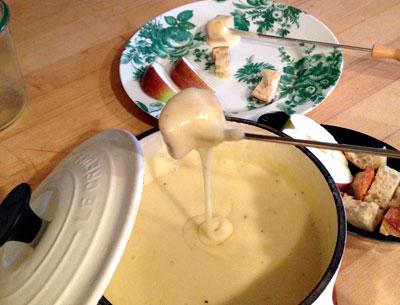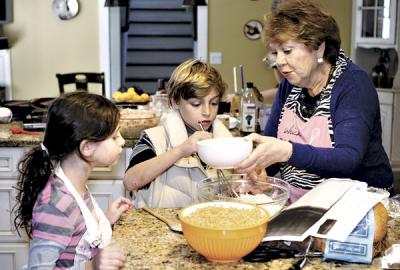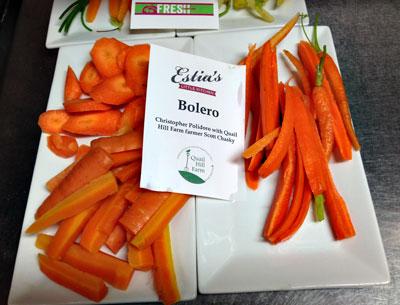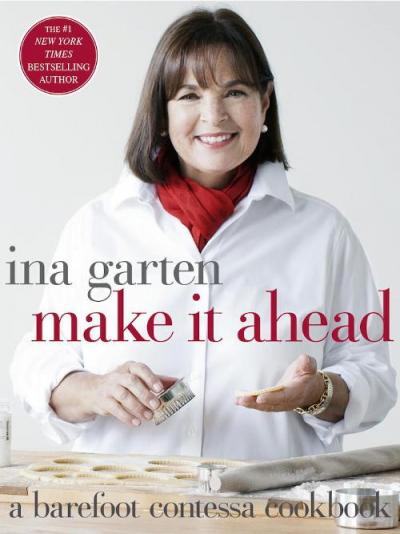East End Eats: Always a Winner
East End Eats: Always a Winner
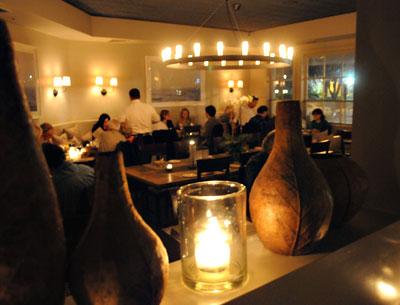
Tutto il Giorno
56 Nugent Street
Southampton
377-3611
Dinner, Thursday through Monday
Lunch, Saturday and Sunday
If you are a fan of Tutto il Giorno in Sag Harbor, you will definitely like Tutto il Giorno in Southampton. For starters, you have a better chance of getting a table. The Tutto in Sag Harbor is a tiny, or should I say “piccolo” restaurant with a mere 38 seats that fill up fast. The Tutto in Southampton is much bigger and airier, but has similar, attractive decor and plenty of banquettes with pillows.
The walls are grayish, actually rather difficult to define as the lighting is exceptionally low. This is great for looking more attractive across the table but hell when you’re trying to read the menu. There are mirrors and beautiful Mary Ellen Bartley photographs, and some black and white portraits of gentlemen at a funeral in Sardinia.
The menus are almost identical — faithfully Italian, with plenty of homemade pasta options, and quite expensive. High prices don’t bother me so much when the food lives up to it and the environment is pleasant. Thankfully, there are excellent prix fixes and date night specials that take the sting out of the cost.
We took advantage of the prix fixe menu offerings on a recent Sunday evening, beginning with appetizers of roasted octopus, polenta with cauliflower, and mussels with clams in spicy tomato sauce. The octopus came to the table in its own little cast iron skillet, leading us to believe it would be scorching hot, which it wasn’t. It was warm and tender and tasty, but we agreed it could have used a bit more char. It was served with plenty of lemon juice and olive oil, and had a good amount of sweet fingerling potatoes, green olives, and cipollini onions scattered around in the pan. It was a nice contrast between chewy polpo, fluffy potatoes, and sharply salty olives.
The polenta had good flavor but the texture was way more Cream of Wheat cereal than the traditional coarsely ground cornmeal used for this dish. The bits of local cauliflower added sweetness and the crumbled Gorgonzola cheese swirled through gave it richness and tang. The mussels and clams in spicy tomato sauce were the best of all, a generous bowl with plenty of tender Manila clams and good-size mussels. The sauce was chunky, full of tomatoes, fennel, onions, and garlic. The dish was topped with a crostini with a dab of excellent garlic aioli.
For entrees we tried the black sea bass in parchment paper, tagliatelle with bottarga and spicy chilies, and ravioli stuffed with butternut squash. All three were superb.
The fish, which came out in its charred paper envelope with the top sliced open, was on a bed of fresh spinach and haricots verts. The fish was fresh and moist, topped with fresh herbs, capers, and black olives.
The tagliatelle was spicy from slivers of fresh red chilies and had toasted pine nuts, thinly sliced garlic, and marvelous bits of bottarga. Bottarga is the salted, cured fish roe from grey mullet or tuna. Bottarga di muggine is the grey mullet version, usually so firm it is grated with a microplaner. The bottarga di tonno (tuna) is a bit softer. I’m not sure which kind our dish had, but it adds a mysterious, umami, briny funk to dishes. We loved it.
The roasted butternut squash ravioli was perfect — super thin pasta pockets, cooked al dente, filled with more squash than ricotta, making them quite light and virtuous. This is good because they were swimming in a delicious browned butter sage sauce. The addition of toasted pumpkin seeds made this dish even better. It’s the little things, folks!
The service on the night of our visit was very good. We had an entertaining waiter who pointed out to us that getting the date night special for $25 was just as cheap as three hamburgers at McDonald’s. Not quite, but we were amused at his enthusiasm for a good bargain. Prices at Tutto il Giorno are high for Italian food. Appetizers are $15 to $21, pastas are $22 to $29, entrees are $33 to $40, sides are $12. I failed to find out dessert prices as we got the prix fixe special. I’m going to guess they are between $10 and $12.
For desserts we got the biscotti, tiramisu, and ricotta cheesecake. The biscotti were excellent, crunchy and hard with bits of dark chocolate in them. The tiramisu was as good an execution for this dish as you can hope for, well soaked ladyfingers, full of espresso flavor, layered with whipped mascarpone and dusted with cocoa powder. The ricotta cheesecake was also very good and simple, with mild vanilla flavor, a cookie crumb crust with a bit of cocoa powder in it, and streaks of good caramel sauce. The other dessert option was flourless chocolate cake. I will say here that while the desserts were tasty, the choices seem like something from a 1980s time warp. Considering the creativity and fine quality of all the other menu options, it would be nice to see something like a blood orange sorbet or olive oil cake or fruit crostada, still faithfully Italian, just more original.
I have never been disappointed with a meal at Tutto il Giorno in Sag Harbor, and if I lived in Southampton I would certainly patronize this location as well. The food is always good, the staff professional (occasionally amusing), and the dining rooms serene.

